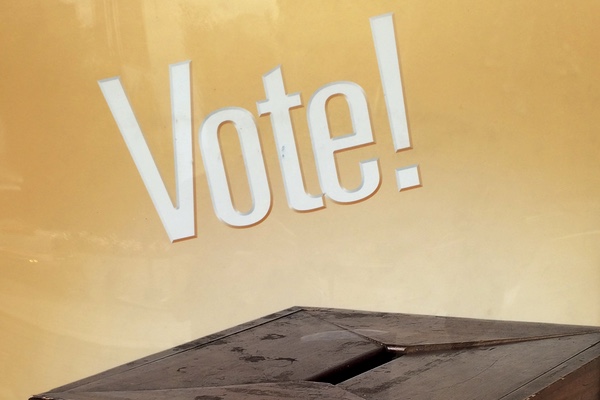No Matter Who’s Elected President November 8, They Aren’t Likely to Win a Majority of the Vote

We are about to elect the 16th President who will not be a majority vote winner. This is due in most of the cases to the reality of the impact of third parties on the popular vote. Neither Hillary Clinton nor Donald Trump will come anywhere near the majority of the total popular vote, but we have had many significant Presidents who faced the same situation. Here they are, ranked in the order of lowest to highest popular vote winners.
John Quincy Adams in 1824, in a four-way race with Andrew Jackson, Henry Clay, and William Crawford, actually ended up second in popular votes, but was selected by the House of Representatives over Andrew Jackson, due to the intervention of Clay, who was eliminated from consideration by ending up last in electoral votes, although third in popular votes. This was the first time that the popular vote loser won the Presidency, and Adams’ percentage of the total popular vote, therefore, was the lowest ever, only 30.9 percent.
 Abraham
Lincoln in 1860, also in a four way race with Stephen Douglas, John
C. Breckinridge, and John Bell, only gained 39.6 percent of the vote,
but won all of the Northern “free” states except New Jersey.
While nine losing Presidential nominees had less than 40 percent of
the total popular vote, only Adams and Lincoln as winners had this
result.
Abraham
Lincoln in 1860, also in a four way race with Stephen Douglas, John
C. Breckinridge, and John Bell, only gained 39.6 percent of the vote,
but won all of the Northern “free” states except New Jersey.
While nine losing Presidential nominees had less than 40 percent of
the total popular vote, only Adams and Lincoln as winners had this
result.
Woodrow Wilson in 1912, in another four-way race with Theodore Roosevelt, William Howard Taft and Eugene Debs, had only 41.8 percent of the total popular vote. Bill Clinton in 1992, in a three-way race with George H. W. Bush and Ross Perot, only won 43 percent of the total popular votes, slightly less than Richard Nixon in 1968, also in a three-way race with Hubert Humphrey and George Wallace, who had 43.4 percent of the total popular vote.
James Buchanan in 1856, in another three-way race with John C. Fremont and Millard Fillmore, gained only 45.3 percent of the total popular vote. Grover Cleveland, in his second election victory in 1892, and also in a three-way race with Benjamin Harrison and James Weaver, won 46 percent of the total popular vote. Zachary Taylor in 1848, in another three-way race with Lewis Cass and Martin Van Buren, gained only 47.3 percent of the total popular vote. Benjamin Harrison in 1888 in a three way race against Grover Cleveland and a Prohibition candidate, Clinton B. Fisk, won 47.8 percent of the total popular vote.
George W. Bush, in a losing popular vote race against Al Gore, Ralph Nader, and Pat Buchanan in 2000, was declared the winner in Florida by the intervention of the Supreme Court, with only 47.8 percent of the popular vote, and a similar situation occurred in 1876, when Rutherford B. Hayes, actually gaining fewer votes than Samuel Tilden and Greenback Party nominee Peter Cooper in another three-way race, was chosen by an Electoral Commission as the winner of a contested electoral vote, winning 47.9 percent of the popular vote.
James A. Garfield in 1880, in a three-way race with Winfield Scott Hancock and Peter Cooper, won 48.3 percent of the total popular vote, and Grover Cleveland, in his first election in 1884, in a four-way race with James G. Blaine and two minor party candidates gaining nearly 3 percent of the vote, won 48.8 percent of the popular vote..
Finally, five Presidents gained somewhere from 49 percent to 49.7 percent of the total popular vote. Woodrow Wilson in 1916, with Charles Evans Hughes and two minor party candidates, won 49.2 percent of the total vote, as did Bill Clinton in 1996, in a three-way race with Bob Dole and Ross Perot. James K. Polk in 1844, in a three-way race with Henry Clay and James G. Birney, gained 49.5 percent of the total vote. Harry Truman in 1948, in a four-way race against Thomas E. Dewey, Strom Thurmond, and Henry A. Wallace, won 49.6 percent of the vote. Finally, John F. Kennedy in 1960, in a two-way race with Richard Nixon, but small amounts of votes going to minor party candidates, won 49.7 percent of all votes cast.
Note that all these elections, with the one exception of 1960 and the unusual situation in 1824, had strong or competing third parties, which took enough percentage of the vote to prevent a majority. The often forgotten Socialist, Greenback and Prohibition parties contributed as well as other better known third parties and candidates.
Seven of the Presidents who won without a majority were Democrats—Polk, Buchanan, Cleveland both times, Wilson both times, Truman, Kennedy, and Clinton both times. Six of the Presidents who won without a majority were Republicans—Lincoln, Hayes, Garfield, Benjamin Harrison, Nixon, and George W. Bush. One Whig, Zachary Taylor, and one Democratic-Republican, John Quincy Adams, finish the list.
The Gilded Age saw five straight elections where the competition was so fierce that the Presidents of that era all failed to win a majority of the popular votes—Hayes, Garfield, Cleveland, Harrison, and Cleveland again.
One conclusion we can draw from these statistics is that some of our most outstanding Presidents, as judged by historians and political scientists, were elected with less than a majority: Polk, Lincoln, Wilson, Truman, Kennedy, and Clinton.